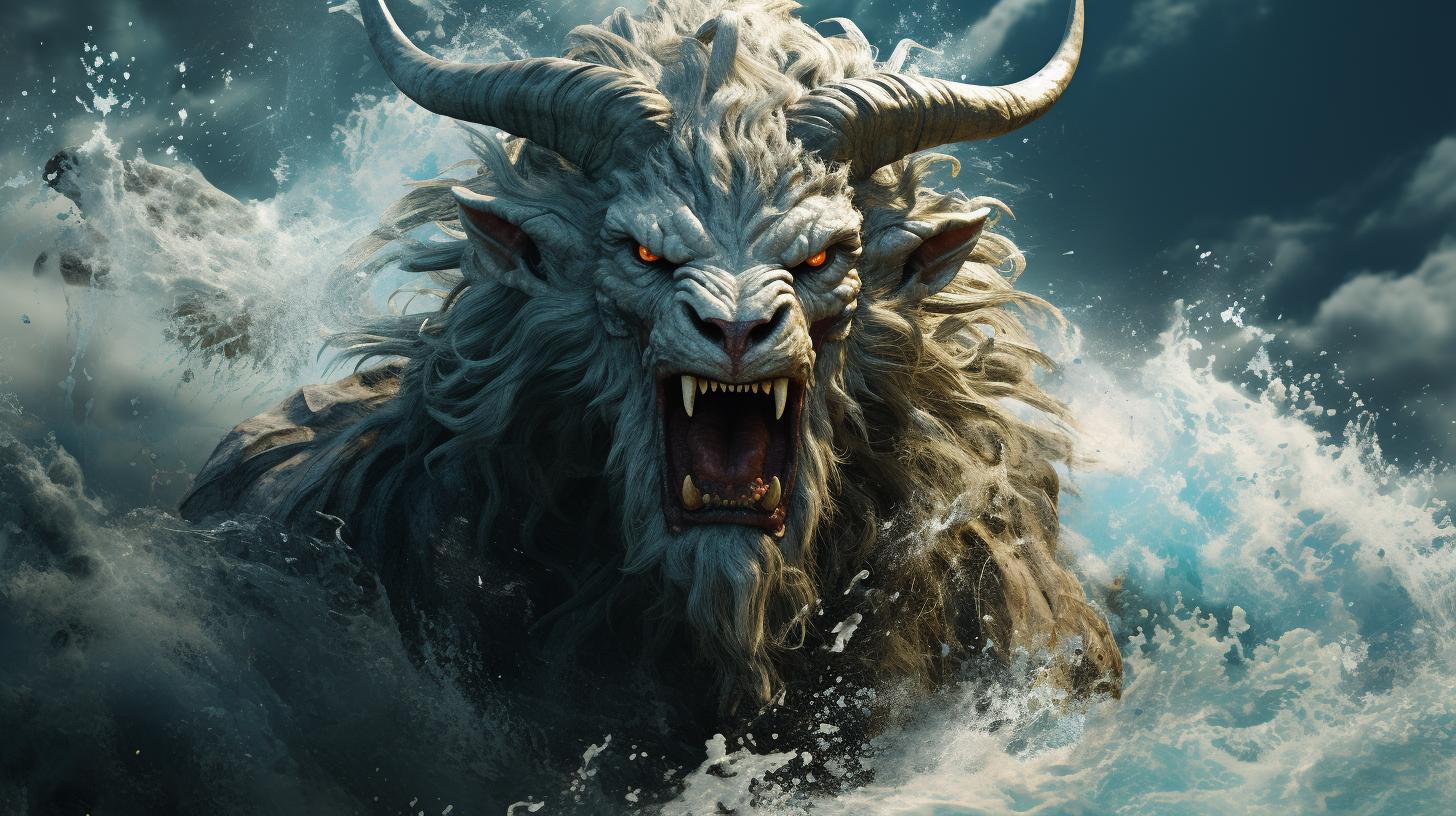Semele in Greek Mythology: A Tragic Figure of Love and Deception

In Greek mythology, Semele, daughter of Cadmus and Harmonia, was a tragic figure caught in a web of love and deception. Her relationship with Zeus ignited the jealousy of Hera, leading to Semele’s fatal request for divine revelation.
Despite her demise, Semele gave birth to Dionysus, the god of wine and celebration. Dionysus later embarked on a mission to rescue Semele from the underworld, transforming her into the goddess Thyone.
Represented in various forms of art and literature, Semele’s myth continues to inspire and captivate. Explore the depths of Semele’s story and its connections to Greek mythology.
Semele in Greek Mythology: A Tragic Figure of Love and Deception
Semele’s Divine Lineage: Daughter of Cadmus and Harmonia
In the realm of Greek mythology, Semele stood as a tragic figure, with her origins traced back to a divine lineage.
She was the daughter of Cadmus, the founder of Thebes, and Harmonia, the daughter of Ares and Aphrodite. Being connected to the gods through her parents, Semele’s lineage bestowed upon her a direct association with the divine.
The Jealousy of Hera: Hera’s Plot to Destroy Semele
However, Semele’s connection with the gods did not lead to happiness. Her romantic involvement with Zeus, the king of the gods, ignited the envy of his wife, Hera. Capitalizing on this jealousy, Hera orchestrated a deceitful plan to sow doubt in Semele’s mind, using the disguise of Beroe, a mortal nurse, to gain her trust.
Semele’s Fatal Request: The Revelatory Encounter with Zeus
Falling victim to Hera’s manipulation, Semele was convinced to ask Zeus to reveal himself in his divine glory. Unbeknownst to her, Hera hoped that this revelation would be too overwhelming for a mortal to endure, resulting in Semele’s demise.
Obliging her request, Zeus unveiled himself, but the majestic sight proved too much for Semele, who perished when consumed by the divine lightning.
The Birth of Dionysus: Semele’s Unfortunate Fate and Zeus’ Rescue
Tragically, Semele was pregnant with Zeus’ child at the time of her death.
Zeus, grief-stricken over her loss, saved their unborn child, Dionysus, by rescuing him from her womb. Zeus nurtured their son in his own thigh until Dionysus was ready to be born.
Thus, Dionysus, the god of wine and celebration, came into existence despite the tragic fate of his mother.
Dionysus, the God of Wine and Celebration: Semele’s Son’s Role in Greek Mythology
Dionysus, borne out of Semele’s union with Zeus, emerged as a significant figure in Greek mythology.
Known for his association with wine, revelry, and ecstatic celebrations, Dionysus held a prominent place in the pantheon of gods. His birth marked a pivotal moment in mythology, intertwined with the sorrowful tale of his mother, Semele.
Rescuing Semele from the Underworld: Dionysus’ Mission and the Transformation into Thyone
Dionysus, driven by his love for his mother, embarked on a daring mission to rescue Semele from the depths of the underworld. Through the divine will of Zeus, Semele was elevated to the status of a goddess and given the name Thyone.
In this ascension, she found solace and a place among the gods on Mount Olympus, immortalized after her tragic end.
Representations of Semele in Art and Literature: Tragic Inspirations Across the Centuries
The tragic story of Semele has captivated artists and writers throughout history, inspiring various interpretations in art and literature.
Although ancient works such as Eschylus’ lost tragedy ‘Semele’ and depictions on Etruscan jewelry and Attic vases testify to her enduring impact, Semele’s tale continues to resonate and be reimagined in diverse forms of creative expression.
Etymology of Semele: Linguistic Connections and Meaning
Delving into the etymology of Semele’s name reveals intriguing linguistic connections. Some scholars suggest that her name originates from the Thracian-Frigian language, derived from an Indo-European root meaning ‘earth.’ Furthermore, etymological links can be found between Semele and earth deities in other cultures, such as Baltic and Slavic mythologies.
The Dionysus Deity: Exploring the God of Wine and Revelry
As one of the most captivating figures in Greek mythology, Dionysus, the god of wine and revelry, holds a prominent place among the pantheon of gods. This section delves into the various aspects of Dionysus’ divine nature, his role in Greek mythology, the symbolism associated with him, and the correct pronunciation of his name.
The Divine Parentage of Dionysus: Zeus and Semele’s Offspring
Dionysus was born as the son of Zeus, the king of the gods, and Semele, a mortal woman. His divine parentage gave him a unique status and a connection to both the mortal and immortal realms.
Through his lineage, Dionysus inherited exceptional powers and played a significant role in the realm of gods and humans.
Dionysus in Greek Mythology: His Role and Attributes
Within the realm of Greek mythology, Dionysus held a multifaceted role. He embodied the joy of celebration, wine, and ecstasy, and his presence was often associated with festivals and merriment.
Dionysus was revered as a transformative and liberating figure, symbolizing the duality of life and the cyclical nature of existence.
The Symbolism of Dionysus: Exploring the Various Symbols Associated with the God
- The Thyrsus: A staff adorned with ivy and pinecone symbolizing fertility and abundance.
- The Grapevine: Representing both the cultivation of wine and the intoxicating effects it brings.
- The Leopard: A companion of Dionysus, symbolizing wild and untamed nature.
- The Maenads: Female followers of Dionysus portrayed as powerful and frenzied revelers.
These symbols provide a deeper understanding of Dionysus’ significance and the themes he represents within Greek mythology.
Dionysus Pronunciation: Correctly Saying the Name of the God of Wine
Pronouncing Dionysus’ name correctly is essential to truly appreciate his mythological significance. In the US, the standard pronunciation is [dai-uh-nahy-suhs], with the emphasis on the second syllable. It is important to honor the proper pronunciation to fully engage with the stories, rituals, and cultural expressions surrounding Dionysus.
The Mythological Connections: Zeus, Hera, and Other Gods
The intricate relationships between Zeus, Hera, and other gods in Greek mythology add depth and complexity to the tale of Semele.
This section delves into the various aspects of these connections and sheds light on the love, tragedy, jealousy, and deception intertwined among the divine figures.
The Relationship Between Zeus and Semele: Love and Tragedy in Greek Mythology
Zeus, the king of the gods, fell deeply in love with Semele, a mortal woman of divine descent. Their passionate relationship became a source of envy for Zeus’ wife, Hera, leading to tragic consequences for both Semele and Zeus. Their story highlights the struggles that arise when mortals cross paths with the immortals.
The Wrath of Hera: Jealousy and Deception in the Divine Realm
Hera, known for her vengeful nature, could not bear Zeus’ infidelity with Semele. The goddess of marriage and childbirth devised a cunning plan to destroy Semele, disguising herself as Beroe, a mortal nurse, in order to manipulate Semele’s desires.
Hera’s jealousy and deception play a pivotal role in Semele’s ultimate fate.
Semele, Hera, and Zeus: Unraveling the Complexities of Mortals and Gods
The love triangle between Semele, Hera, and Zeus exemplifies the intricate entanglements that exist between mortal humans and the divine realm. Semele’s mortal vulnerability, Hera’s divine power, and Zeus’ conflicting allegiances showcase the complexities of navigating relationships between mortals and gods, ultimately leading to tragedy and divine interventions.
Semele’s Ancestry: Cadmus, Ares, Aphrodite, and Other Gods in the Family Tree
Semele’s lineage connects her to prominent deities such as Cadmus, the founder of Thebes, Ares, the god of war, and Aphrodite, the goddess of love and beauty.
These familial connections further highlight the intertwining of mortal and divine aspects in Semele’s life and the larger tapestry of Greek mythology.
Semele in Thebes: The Setting of Tragedy and Triumph
Thebo-centric Mythology: Semele’s Life and Influence in Thebes
Semele’s presence in Thebes holds significant importance in Greek mythology as she lived and shaped the narrative in this city.
Her tragic story and divine lineage resonated deeply within the Theban society, intertwining mortals and gods in a complex web of relationships and destinies. Semele’s influence in Thebes extended far beyond her own tale, leaving a lasting impact on the city’s mythological landscape.
The Acropolis of Cadmeia: Semele’s Connection to Theban Royalty
The Acropolis of Cadmeia served as a symbol of Theban royalty and power, and it was within these walls that Semele’s fate and lineage were inextricably linked. As the daughter of Cadmus, the founder of Thebes, Semele’s connection to the Acropolis and its rich history added another layer of significance to her story.
Exploring this connection provides further insight into the mythical landscape and cultural identity of Thebes.
The Mythological Events in Thebes: Other Stories and Characters Linked to Semele
Alongside Semele’s own tale, Thebes was the stage for numerous other mythological events and characters that were intricately associated with her narrative. From the story of Oedipus and the Sphinx to the legendary Seven Against Thebes, these tales interweave with Semele’s presence, creating a tapestry of tragedy and triumph unique to the city.
Exploring these interconnected stories sheds light on the larger mythological context in which Semele’s story unfolds.
.




















